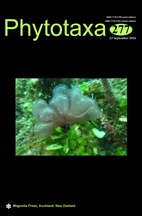Abstract
Controversy regarding the status of the genus Nomocharis Franchet (1889: 113) has been undergoing since its recognition by Franchet (1889). Recent molecular studies (Nishikawa et al. 1999, Hayashi & Kawano 2000, Nishikawa et al. 2001, Ronsted et al. 2005, Peruzzi et al. 2009) have resolved Nomocharis as being nested within Lilium Linaeus (1753: 302). Results of our own previous studies (Gao et al. 2012, Gao et al. 2013a, Gao et al. 2013b), with expanded sampling of species of Nomocharis have been congruent with those of previous studies by others. Thus recognition of Nomocharis would render Lilium paraphyletic. We prefer to recognize a monophyletic Lilium here, although paraphyletic groups are sometimes advocated in literature (e.g., Brummitt, 2014; Ehrendorfer & Barfuss, 2014; George, 2014; Hörandl, 2014; Stuessy & Hörandl, 2014; Stuessy et al., 2014). Most recently, we proposed that the morphological divergence between Nomocharis and Lilium was the result of habitat specialization (Gao et al. 2015). The extensive introgression caused by hybridization within Lilium and Nomocharis (Gao et al. 2013a, 2015) supports a single-genus concept.

